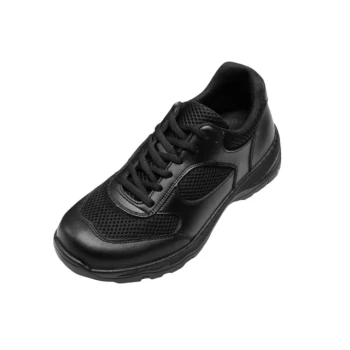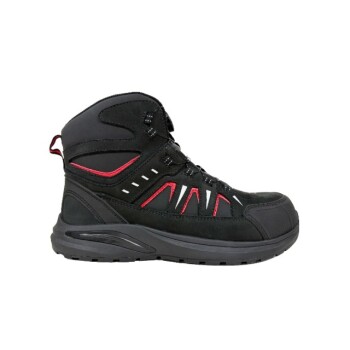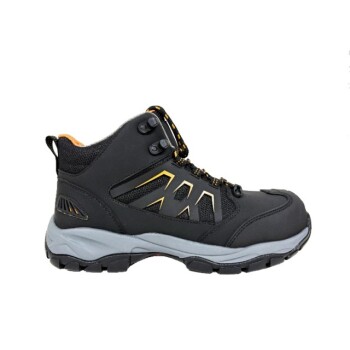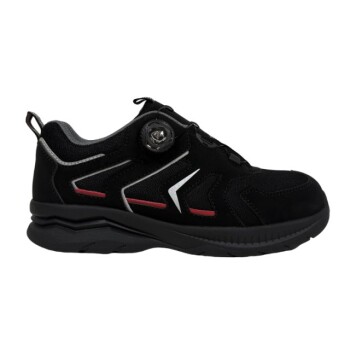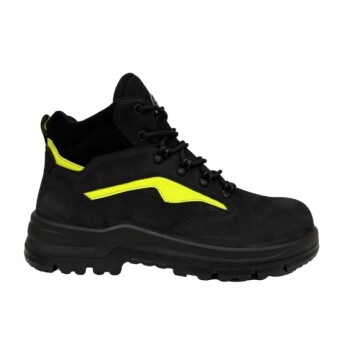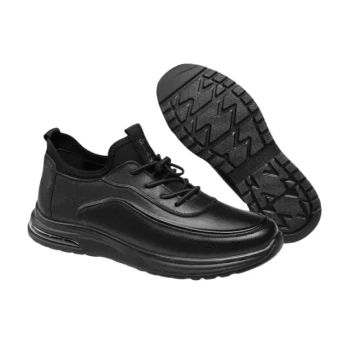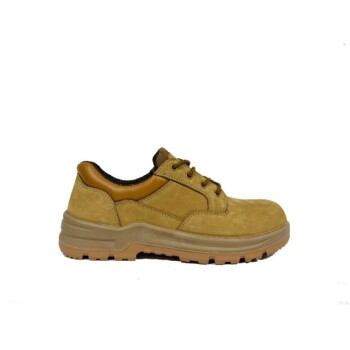The best walking shoes for bunions are defined by two primary characteristics: a wide, spacious toe box to prevent pressure and a flexible, stretchable upper material that accommodates the bunion's shape without irritation. These features work together to create an environment that reduces friction on the sensitive joint, allowing for more comfortable movement.
When choosing a walking shoe for bunions, the guiding principle is to eliminate pressure and friction. The right shoe provides ample space for your forefoot to sit naturally, preventing the constant irritation that leads to pain and inflammation.
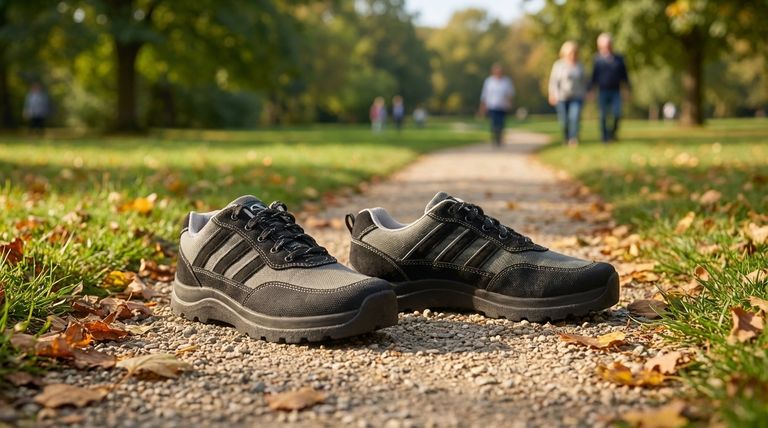
The Anatomy of a Bunion-Friendly Shoe
Understanding why certain features matter is the key to selecting a shoe that provides genuine relief. A bunion is a structural change in your foot, and your footwear must adapt to this new shape, not fight against it.
The Critical Role of the Toe Box
A constrained forefoot is the primary source of bunion pain. A shoe's toe box—the entire section that houses your toes and the ball of your foot—must be spacious.
Look for shoes described as having an anatomical or foot-shaped fit. This design is wider and allows your toes to splay naturally, preventing the big toe from being pushed further inward.
Why Upper Material Matters
The material that makes up the top of the shoe is your first line of defense against irritation. Stiff materials like hard leather can create painful pressure points directly on the bunion.
Instead, prioritize shoes with flexible and stretchable uppers, such as engineered mesh or soft knit fabrics. These materials can gently expand around the bony prominence of the bunion, moving with your foot instead of rubbing against it.
Supportive, Yet Gentle Cushioning
While not directly touching the bunion, the shoe's cushioning system plays a vital role. Good cushioning absorbs the impact of each step, reducing the overall stress transmitted through your foot.
This lessens the strain on the compromised big toe joint, contributing to greater comfort over longer walks.
A Stable and Secure Heel
A wide toe box is only effective if your foot isn't sliding forward into it. A shoe with a firm heel counter locks your heel in place.
This stability prevents your foot from shifting, ensuring the bunion isn't jammed against the front or side of the shoe with every step you take.
Understanding the Trade-offs
No single shoe is perfect, and selecting one often involves balancing competing characteristics. Being aware of these trade-offs will help you make a more informed decision.
Support vs. Flexibility
The most flexible and softest uppers provide maximum comfort for the bunion itself. However, some of these minimalist designs may lack the arch support or torsional rigidity needed for long-distance walking or for individuals with other foot conditions like plantar fasciitis.
Durability of Stretch Materials
Engineered mesh and knit fabrics are excellent for accommodating bunions but may be less durable than traditional leather, especially if you frequently walk on rough trails or in harsh conditions. Consider your typical walking environment when evaluating material.
Weatherproofing and Breathability
Features like waterproof membranes are essential for keeping feet dry in wet climates. However, this layer can sometimes reduce a shoe's overall flexibility and breathability, potentially creating a warmer, stiffer interior. Always test the fit to ensure the waterproofing doesn't create new pressure points.
Making the Right Choice for Your Goal
Your ideal shoe depends on your specific needs and activities. Use your primary goal as a guide to prioritize features.
- If your primary focus is daily pain relief: Prioritize a shoe with the absolute widest toe box you can find and a soft, seamless upper material.
- If your primary focus is long-distance fitness walking: Seek a balanced shoe with a wide toe box, substantial cushioning, and a secure heel to prevent foot fatigue.
- If your primary focus is walking in adverse weather: Find a model with the core bunion-friendly features that also incorporates a reliable waterproof lining, and be sure to try it on to check for comfort.
Choosing the right shoe transforms walking from a source of pain into an activity of freedom and health.
Summary Table:
| Key Feature | Primary Benefit | What to Look For |
|---|---|---|
| Wide, Spacious Toe Box | Prevents pressure on the bunion joint | Anatomical, foot-shaped fit |
| Flexible, Stretchable Upper | Accommodates bunion shape without irritation | Engineered mesh or soft knit fabrics |
| Supportive Cushioning | Reduces impact stress on the foot | Ample midsole cushioning |
| Secure Heel Counter | Locks heel in place to prevent foot sliding | Firm heel cup for stability |
Ready to manufacture comfortable, bunion-friendly walking shoes for your customers?
As a large-scale manufacturer, 3515 produces a comprehensive range of footwear for distributors, brand owners, and bulk clients. Our production capabilities encompass all types of shoes and boots, including specialized designs with wide toe boxes and flexible uppers ideal for bunion relief.
We can help you bring high-quality, comfortable walking shoes to market. Contact our team today to discuss your manufacturing needs.
Visual Guide
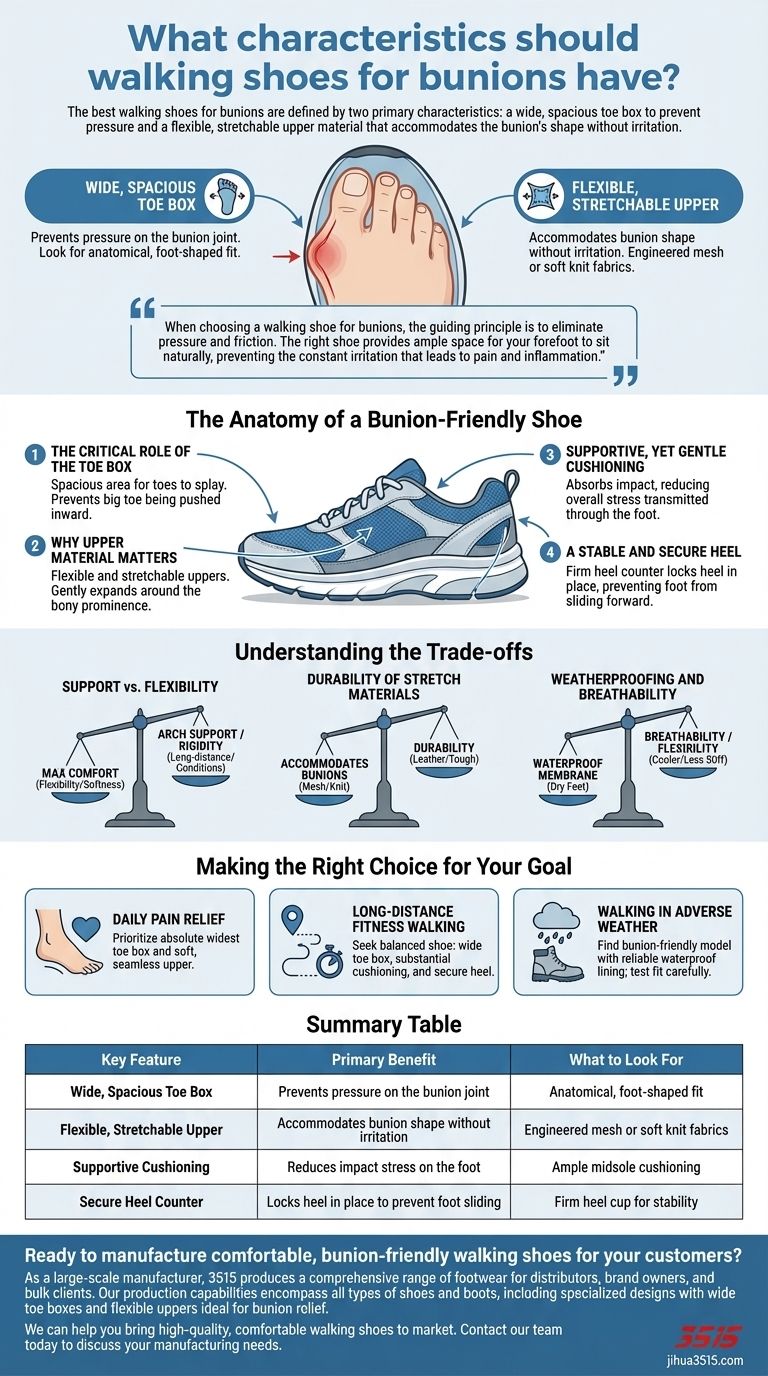
Related Products
- Durable Rubber-Soled Utility Shoes for Wholesale & Custom Brand Manufacturing
- Safety Footwear Wholesale Manufacturer for Custom OEM/ODM Production
- Wholesale Durable & Breathable Training Shoes for Custom Brands
- Wholesale Safety Footwear Manufacturer for Bulk & Custom OEM Orders
- Wholesale Customizable Safety Boots Durable & Protective Footwear Manufacturing
People Also Ask
- What historical breakthrough in 1844 contributed to modern shoe sole manufacturing? The Vulcanization Revolution
- What are the main applications of vulcanized rubber? Unlock Durability for Tires, Footwear & More
- Which type of sole is better for premium sneakers and why? The Definitive Guide to Rubber Outsoles
- Why should we wear rubber soled shoes? Unlock Superior Safety and Durability
- What are rubber soled shoes? The Ultimate Guide to Durable, All-Weather Footwear


